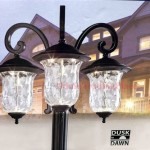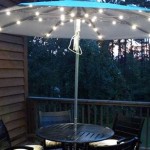Rustic Outdoor Living Ideas: Creating a Natural Retreat
The allure of the outdoors is undeniable. Many individuals seek to extend their living spaces beyond the confines of their homes, creating areas where they can relax, entertain, and connect with nature. Rustic outdoor living spaces offer a unique charm, characterized by natural materials, simple designs, and a focus on functionality. This approach emphasizes comfort and durability while harmonizing with the surrounding environment.
Designing a rustic outdoor living space involves careful consideration of several factors, including available space, desired functionality, and personal aesthetic preferences. The goal is to create a cohesive and inviting area that reflects a rustic sensibility. This often encompasses incorporating natural elements like wood, stone, and greenery, while minimizing artificial or overly polished materials.
This article explores key ideas for creating a rustic outdoor living space, providing practical tips and inspiration for transforming any backyard into a natural haven.
Embracing Natural Materials
The cornerstone of any rustic design is the deliberate use of natural materials. These materials not only contribute to the aesthetic appeal but also offer durability and a connection to the environment. Wood, in particular, plays a significant role in defining the rustic character of outdoor spaces. Untreated or minimally treated lumber, such as cedar, redwood, or reclaimed wood, can be used for a variety of purposes, from constructing decks and pergolas to building furniture and planters.
Consider incorporating a wooden deck as the foundation of the outdoor living area. Opt for wider planks and a weathered finish to enhance the rustic feel. Exposed wood beams in a pergola or gazebo can provide shade and visual interest, creating a focal point for the space. Alternatively, a simple lattice structure made from branches or rough-hewn lumber can define a seating area or screen off a section of the yard for privacy.
Stone is another essential element in rustic outdoor design. Natural stone can be used for pathways, patios, retaining walls, and fireplaces. Choose locally sourced stones that complement the region's natural landscape to create a sense of authenticity. Flagstone patios, river rock pathways, and stacked stone fire pits are all classic examples of using stone to enhance the rustic aesthetic.
The integration of natural materials extends beyond structural elements. Consider using woven wicker or rattan furniture, which offers both comfort and durability. Add natural fiber rugs, such as jute or sisal, to define seating areas and provide a soft surface underfoot. Incorporate clay pots and terracotta planters to showcase plants and herbs, further blurring the line between indoor and outdoor living.
When selecting materials, prioritize sustainability and longevity. Choose responsibly sourced wood and locally quarried stone whenever possible. Consider the maintenance requirements of each material and select options that are well-suited to the local climate. Proper sealing and weatherproofing can help protect natural materials from the elements, extending their lifespan and preserving their beauty.
Creating Comfortable and Functional Zones
A well-designed rustic outdoor living space should be both comfortable and functional, catering to a variety of activities and needs. Consider how the space will be used, whether for dining, lounging, entertaining, or simply relaxing. Divide the area into distinct zones, each designed for a specific purpose, to maximize its usability.
A dining area can be created with a sturdy wooden table and comfortable seating. A picnic table made from reclaimed wood can provide a casual and rustic dining experience. Alternatively, a more formal dining set with woven chairs and a stone-topped table can create an elegant yet rustic atmosphere. Consider adding an outdoor kitchen or grill area to facilitate meal preparation and enhance the dining experience. A simple brick or stone grill surround can blend seamlessly with the rustic aesthetic.
A lounging area should be designed for relaxation and comfort. Incorporate comfortable seating, such as Adirondack chairs, rocking chairs, or a cushioned outdoor sofa. Add throw pillows and blankets in natural colors and textures to enhance the cozy atmosphere. A hammock strung between trees or a hanging chair suspended from a pergola can provide a relaxing space for reading or napping.
If space allows, consider adding an outdoor fireplace or fire pit. A crackling fire creates a warm and inviting ambiance, extending the usability of the outdoor space into the cooler months. A stone fire pit surrounded by comfortable seating is a classic rustic feature. Alternatively, an outdoor fireplace built from brick or stone can provide a more formal and sophisticated gathering place.
Lighting plays a crucial role in creating a welcoming atmosphere in an outdoor living space. Soft, ambient lighting can enhance the rustic charm and create a sense of intimacy. String lights draped across trees or a pergola can provide a warm and inviting glow. Lanterns and candles can be strategically placed to illuminate pathways and highlight architectural features. Consider using solar-powered lights to minimize energy consumption and reduce the impact on the environment.
Think about adding functional elements to the outdoor space, such as a storage shed for gardening tools or a potting bench for planting. These additions can enhance the practicality of the space and contribute to its overall rustic charm. Construct the storage shed from reclaimed wood or cedar siding to blend seamlessly with the surrounding landscape.
Integrating Nature and Greenery
The essence of a rustic outdoor living space is its connection to nature. Integrating greenery and natural elements is essential for creating a harmonious and inviting environment. Incorporate plants, trees, and flowers to soften the hard lines of the architecture and create a sense of tranquility. Choose plants that are native to the region to minimize the need for watering and maintenance.
Create a garden area with raised beds or planters made from wood or stone. Grow herbs, vegetables, and flowers to add color and fragrance to the outdoor space. Consider incorporating a vertical garden on a wall or fence to maximize space and add visual interest. Use reclaimed wood pallets or repurposed containers to create unique and sustainable planters.
Plant trees to provide shade and privacy. Deciduous trees can offer shade during the summer months and allow sunlight to filter through during the winter. Coniferous trees can provide year-round greenery and create a sense of enclosure. Choose trees that are well-suited to the local climate and soil conditions.
Incorporate natural elements such as rocks, pebbles, and driftwood into the landscape. These elements can add texture and visual interest to the outdoor space. Use rocks to create pathways, borders, or water features. Arrange driftwood artfully to create sculptures or focal points. Consider adding a small pond or water feature to attract wildlife and create a soothing soundscape.
Attract birds and butterflies to the outdoor space by planting native flowers and providing bird feeders and bird baths. These additions can enhance the natural beauty of the space and create a sense of connection to the local ecosystem. Choose bird feeders and bird baths that are made from natural materials, such as wood or stone, to complement the rustic aesthetic.
Consider incorporating a natural lawn alternative, such as clover or moss, to reduce the need for mowing and watering. These alternatives can create a soft and inviting ground cover that blends seamlessly with the surrounding landscape. Clover and moss are also low-maintenance options that require minimal care.
Ultimately, creating a rustic outdoor living space is about embracing the beauty of nature and creating a sanctuary where individuals can relax, reconnect, and enjoy the simple pleasures of the outdoors. By incorporating natural materials, creating comfortable functional zones, and integrating greenery, anyone can transform their backyard into a natural haven.

Rustic Outdoor Living Space Ideas Dutchies Stoneworks

101 Patio Ideas And Designs Photos Rustic Outdoor Fireplace Design

22 Awesome Rustic Patio Design Ideas For Everyday Enjoyment Outdoor Living Rooms Furniture

Cozy Patio With Stone Fire Pit Offers Breathtaking Views Lindgren Landscape

10 Outdoor Living Space Ideas Pictures More Treasured Spaces

79 Cozy Rustic Patio Designs Digsdigs

Rustic Outdoor Patios And Decor Ideas Home Design House With Porch Living

Design Inspiration Rustic Outdoor Living Spaces Home On The Range Blog

25 Rustic Patio And Terrace Decor Ideas Shelterness

Halcyon Style Outdoor Living Modern Rustic
Related Posts







